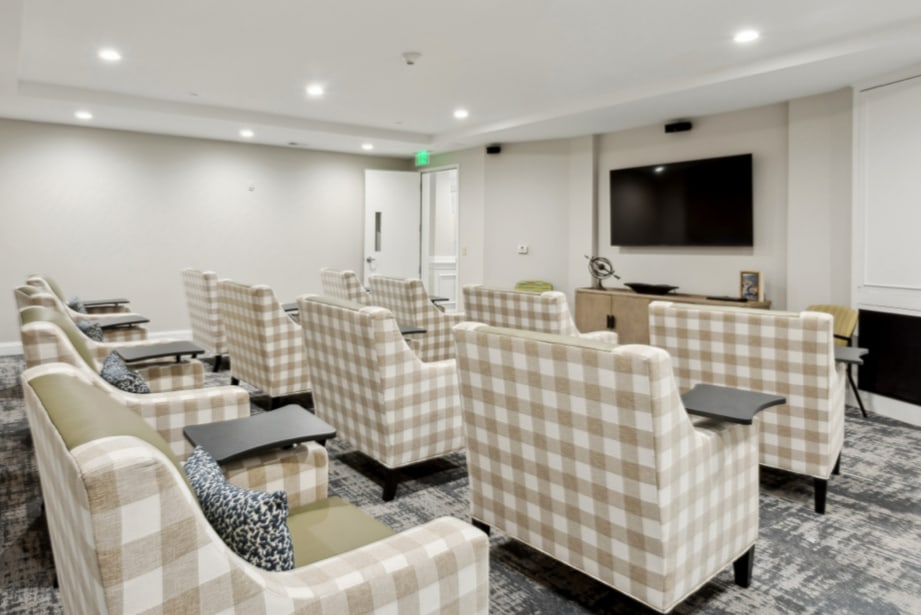Key Takeaways
- Social isolation affects millions of older adults and can impact both physical and mental health.
- Simple activities like joining clubs, volunteering, or using technology can help you stay connected.
- Senior living communities offer built-in social opportunities and support systems.
- Family members play an important role in encouraging social connections.
- Starting small with one or 2 activities can make a big difference in your social life.
Preventing Isolation Among Seniors
Social isolation affects millions of older adults across the country, but it doesn’t have to be part of your story. You have more options than you think when it comes to staying connected with others and maintaining meaningful relationships. Our community resources and active lifestyle programs can help you explore these connections.
Simple activities, community involvement, and the right living environment can help you build and maintain social connections that support your overall well-being. Let’s explore practical ways to stay engaged with your community and the people who matter to you.
Understanding Social Isolation in Later Life
Social isolation happens when you have limited contact with family, friends, and your community. Many older adults face this challenge as they encounter changes such as retirement, health concerns, or the loss of loved ones.
You might feel lonely even when people are around you. This feeling can affect your mood, sleep, and overall well-being in ways you might not expect. Recognizing these feelings is the first step toward making positive changes. You’re not alone in this experience, and there are practical ways to address it.
Simple Ways to Stay Connected at Home
Join Local Groups and Activities
Your community likely offers book clubs, gardening groups, or hobby classes designed for older adults. Libraries, community centers, and religious organizations often host regular gatherings. Consider exploring book club options that match your interests.
Look for activities that match your interests or introduce you to something new. Many groups welcome newcomers and understand that it can feel intimidating to join for the first time.
Use Technology to Your Advantage
Video calls with family members can help you feel more connected than regular phone calls. Many smartphones and tablets make it easy to see and talk with loved ones who live far away. Check out senior-friendly phones designed for easier communication.
Don’t worry if technology feels overwhelming at first. Ask a family member or friend to help you set up these tools and practice using them.
Consider Volunteering Opportunities
Helping others can give you a sense of purpose while meeting new people. Food banks, schools, and local charities often welcome volunteers of all ages and abilities. AARP offers extensive volunteer matching services for older adults.
You can choose volunteer work that fits your schedule and physical abilities. Even a few hours a week can make a meaningful difference in your social connections.
How Senior Living Communities Support Social Connection
Independent living communities create natural opportunities for you to meet neighbors and participate in activities. You can join exercise classes, game nights, or dining experiences without worrying about transportation or planning. Research shows that social interactions increase happiness and overall well-being.
If you need more support, assisted living communities offer social programs alongside help with daily tasks. These environments make it easier to maintain friendships and start new ones. For those with memory concerns, memory care programs include specially designed social activities that match your abilities and interests.
Family Support Makes a Difference
Adult children can help by scheduling regular visits or phone calls with their parents. Even a quick check-in twice a week can help you feel more connected to your family. Family members might also help you explore transportation options or research local activities that match your interests. Sometimes you just need someone to help you take that first step.
Respite care services can give family caregivers a break while providing them with social interaction and activities during the day.

Taking the First Steps Forward
You don’t have to change everything at once. Pick one activity that sounds interesting and give it a try for a few weeks. Consider exploring seasonal activities that encourage social engagement.
If mobility or health concerns make it hard to get out, start with phone calls or video chats with old friends. Small connections can grow into meaningful relationships over time. Remember that building social connections is a process that takes time. Be patient with yourself as you explore new ways to meet people and stay involved in your community.
Ready to Explore Your Options?
Social connections are an important part of healthy aging, and you deserve to have meaningful relationships in your life. Whether you’re looking for ways to stay social at home or considering senior living options, we’re here to help.
Contact Somerby Peachtree City today to learn more about our senior living communities and how they can support your social and physical well-being. Schedule a tour to see firsthand how our residents stay active and connected.










